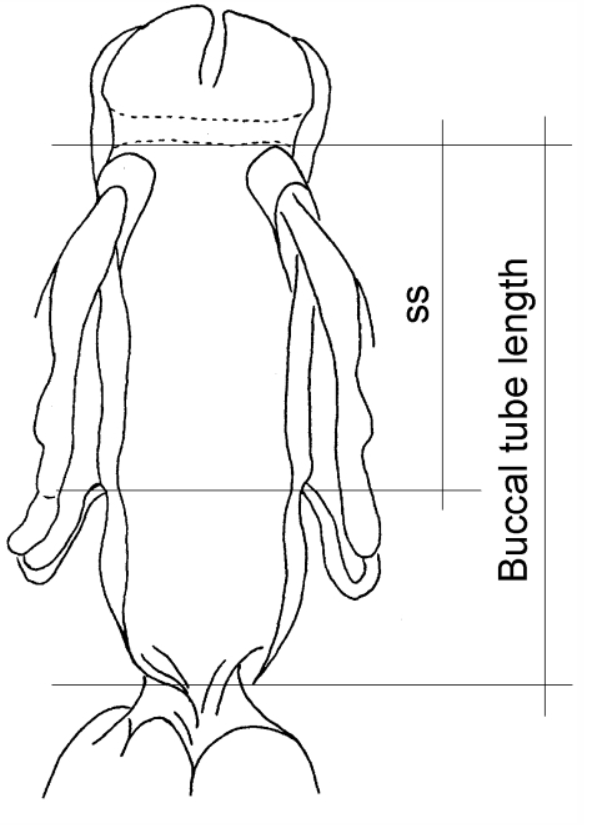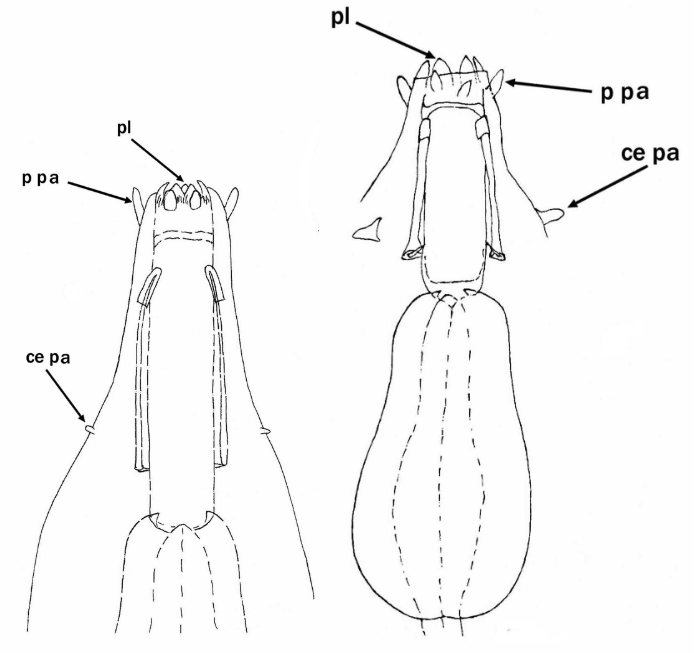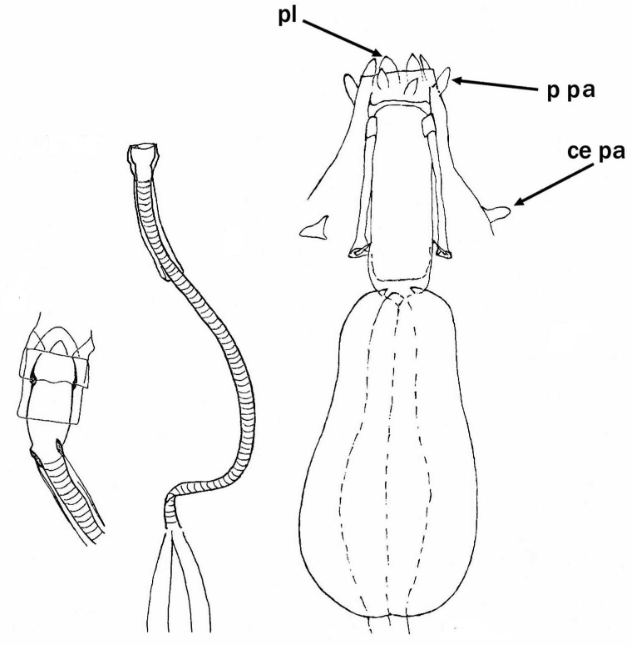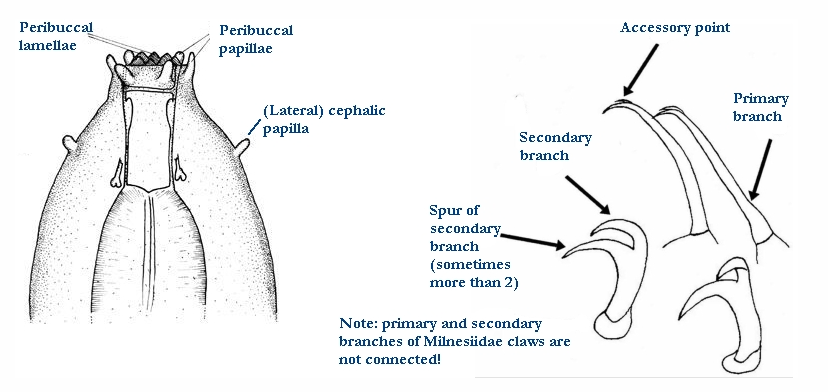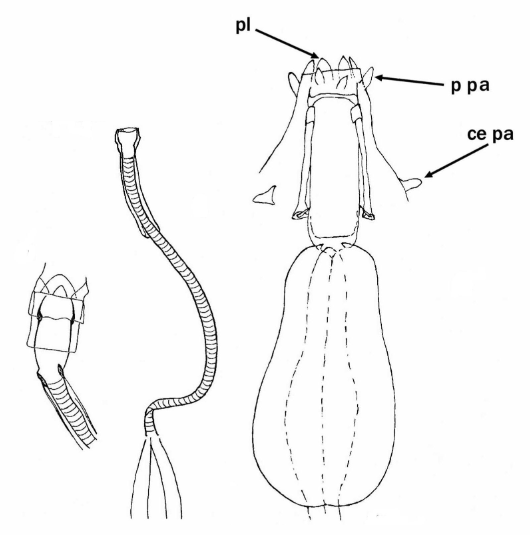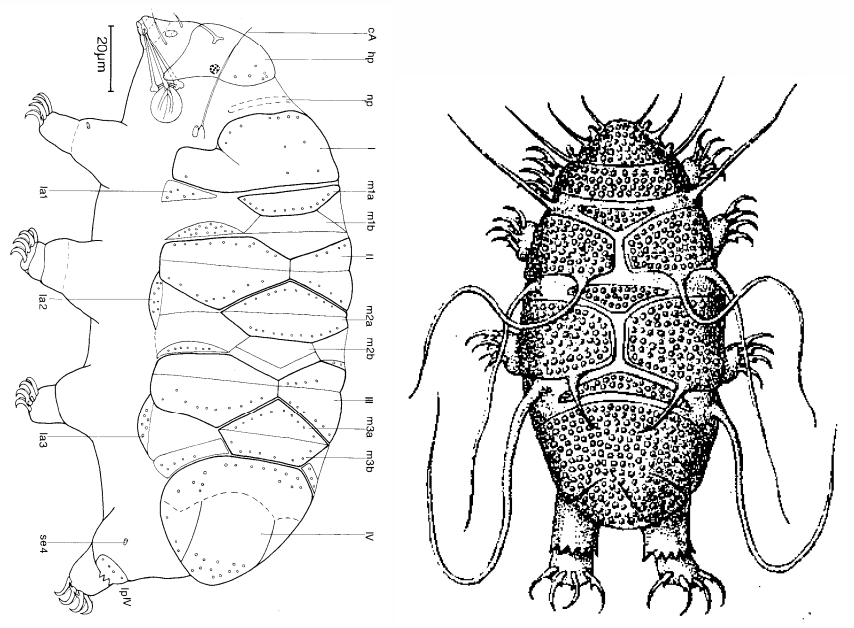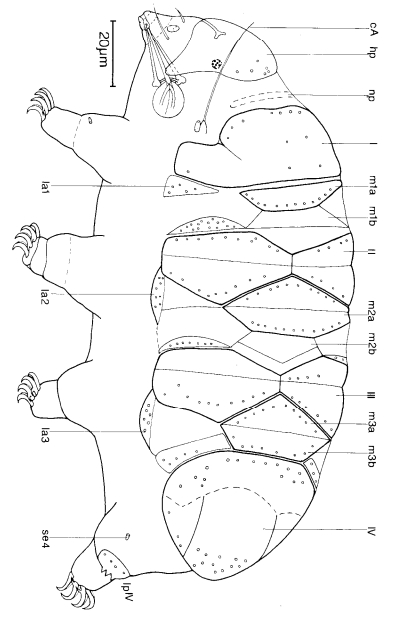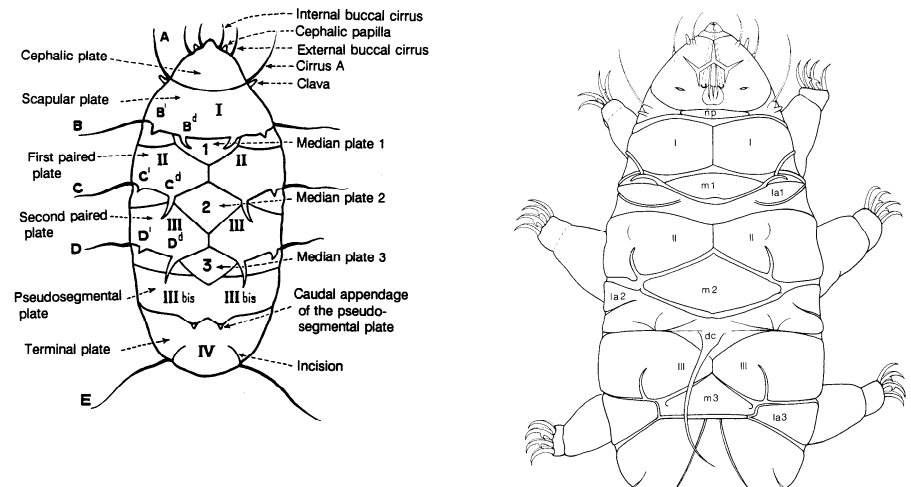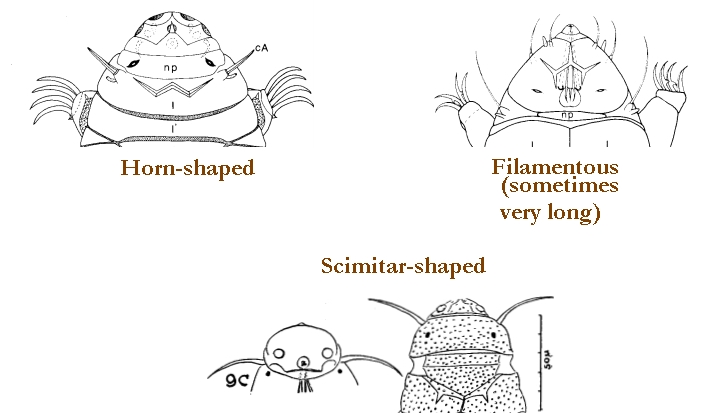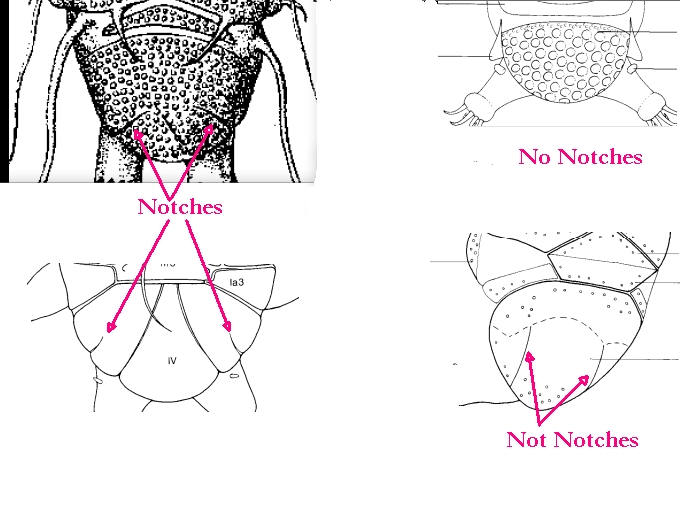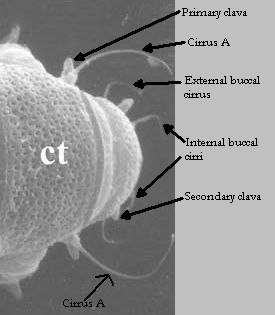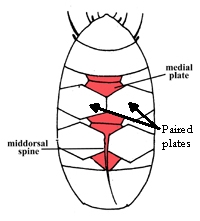Isohypsibioidea from Marley et al. 2011: “Parachela. Claws asymmetrical (2121); Isohypsibius-type claw pairs; AISM ridged.”
Isohypsibioidea from Bertolani et al. 2014: “Double claws asymmetrical with respect to the median plane of the leg (2121), normally with similar shape and size on each leg; double claws of the Isohypsibius type (secondary branch of the external claw inserted perpendicularly on the claw basal tract), or reduced from it: Hexapodibius type (very short, without common basal tract, with a base as large as the sum of the primary and secondary branch widths, and with an evident suture between primary and secondary branch); Haplomacrobiotus type (one branch only); completely absent (Apodibius). Buccal tube completely rigid (apart Paradiphascon; see below) and often relatively large, without (Dastychius, Eremobiotus, Halobiotus, Isohypsibius, Paradiphascon, Pseudobiotus, Thulinius) or with (Apodibius, Doryphoribius, Haplomacrobiotus, Haplohexapodibius, Hexapodibius, Parhexapodibius) ventral lamina. Eggs with smooth shell laid within the exuvium.”
Citations:
Bertolani R, Guidetti R, Marchioro T, Altiero T, Rebecchi L, Cesari M. 2014. Phyloeny of Eutardigrada: New molecular data and their morphological support lead to the identification of new evolutionary lineages. Molecular Phylogenetics and Evolution. 76: 110-126.
Marley NJ, McInnes SJ, Sands CJ. 2011. Phylum Tardigrada: A re-evaluation of the Parachela. Zootaxa. 2819: 51-64.


